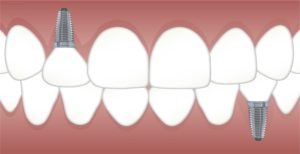Ultrasound is an imagery diagnostic tool used in many applications. It uses sound waves to produce images showing what’s going on inside your body.
Prenatal ultrasound is done to determine the sex of the fetus. It is also requested by the physician in situations of high-risk pregnancies to determine any problem with the fetus. Let’s take a look at the pros and cons of ultrasound.
Pros:
1. Detect fetal abnormalities: Ultrasound detects any problems with the fetus like placenta Previa or multiple fetuses. This information guide obstetric in providing excellent care to both the mother and the child. It can also detect the sex and size of the baby before birth.
2. Safe procedure: Patients are not exposed to ionizing radiation and this makes it a safer procedure compared to x-rays and CT scans. There are no known harmful effects if it is properly taken as prescribed.
3. Wider use: Ultrasound is applied in many diversified areas like medicine, imaging, communication, time tracking of objects and devices, cleaning, and fluid mechanics.
4. Capture clear images: It can capture clear images of deep tissue which can’t be clearly captured by x-rays.
A laptop-sized ultrasound machine carries out the procedure.
5. Widely accessible: Compared to other methods of capturing imagery, ultrasound is widely accessed and it is less expensive.
6. Painless procedure: It is easy to carry out the procedure it’d generally be painless since no needles, shots, or cuts are needed to carry out the ultrasound procedure.
7. Inaudible sound: The high-frequency sound emitted by the transducer is inaudible to the human ear. The echoes of the sound are recorded as they bounce back to determine the size and consistency of soft tissues and organs.
8. Cheaper diagnostic tool: Ultrasound is a cheap diagnostic tool for diagnosing medical conditions affecting soft tissue and other organs. It can identify problems with your liver, pancreas, blood vessels, kidney, uterus, and gallbladder among other issues.
9. Real-time images: The images of the soft tissue are projected on the screen as the physician carries the procedure. You will get real-time images of what is happening to your body.
10. Short-time: The results are available immediately for further analysis and reporting.
Cons:
1. Anisotropy: The ultrasound beam may produce different properties in different directions. It should be perpendicular to the structure of the beam in order to bounce back for the image to be created successfully.
2. Low penetration through skull bone: The process can’t penetrate through the bones or parts of the body that hold air and gas. If you have problems with your bowels, you have to look for an alternative procedure.
3. Low image resolution: Ultrasound leads to an increased depth which affects the frequency required for optimal imaging. This leads to a lower resolution of the image produced.
4. Increase in tissue temperature: There is a slight increase in tissue temperature due to exposure to the ultrasound procedure. The increased temperature has no effect on your body.
5. Premature birth: Routine
Ultrasound of the fetus is linked with early labor and premature birth to some women. It is believed it causes miscarriage although there is no proper research to document that.
6. Increase disability: Frequent
ultrasound can affect the development of the baby leading to some disabilities.
7. Quality results: The quality of the results produced depends on the skills of the operator and their experience.
8. Difficult to interpret: The results are difficult to interpret and require experienced radiologists.
9. Require anatomical knowledge: To get proper ultrasound images, the radiologist should have improved knowledge of anatomy.




It’s nice that you pointed out how ultrasound could capture clear images of deep tissue which can’t be clearly captured by x-rays. I was reading a health magazine while at the office earlier and I saw one article that talked about ultrasound. I didn’t know that ultrasound is actually being used in other fields of medicine, like the use of vascular ultrasound for example.